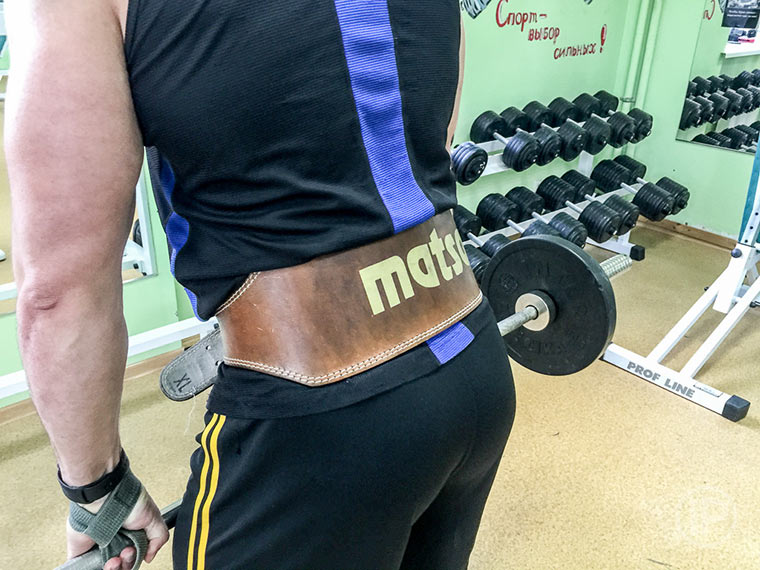You've probably seen athletes wearing a special wide belt in the gym more than once. Why do you need such an athletic belt during physical activity, what is it for and what functions does it perform, as well as how to use it correctly and which one is better to buy? To get answers to these questions, read the following article.
What is a “belt by nature”?
The muscle corset is a whole complex of tissues that help keep the spine in the “correct position.” Their proper development is a guarantee of beautiful posture and back health. All diseases and disorders of the spine, such as hernia, displacement of the vertebrae, pain in the neck and lower back are the result of weak muscles. To prevent these ailments, strengthening exercises should be performed.
Why do you need an athletic belt in the gym?
It is used to prevent injuries in athletes during strength exercises associated with increased physical activity.When tightened, it serves as a fixator for the spine and intervertebral discs in the lumbar region. With increased loads in the form of snatch, push, pull and bench press, as well as squats with it, there is a risk of compression of the vertebrae. To prevent this, a special belt is used that simulates the function of muscular support of the spine.
When is it needed and when is it not?
With sufficiently strong development of the muscle corset, there is no need for constant use of additional support. In addition, this belt has a negative impact on proper breathing and muscle resistance, which gradually leads to atrophy of the latter. This may result in an even higher risk of injury.

Therefore, its use is necessary only in cases where the situation requires it, that is, where there is a risk of injury. When doing fitness, there is no need to use this item, since these loads are insignificant and the natural contraction of the stabilizer muscles is quite sufficient. Internal organs are also involved in the protection process. In the abdominal cavity, when tension occurs, increased pressure is created, as a result of which their displacement can occur.
Etiology of use in physical activity
An athletic belt is an additional element of equipment for athletes who professionally engage in powerlifting, bodybuilding and weightlifting. It is worn around the waist and secured with special fasteners. At the moment of tension, compression of the abdominal organs occurs, helping to keep the spine in the correct position.
It is advisable to use an athletic belt when exercising with weights in the following cases:
- when there is increased abdominal tension;
- to stabilize already warmed muscles;
- as additional support for the spine;
- to obtain maximum stability of the spine.
During training, you should periodically remove the belt between sets. Use it only when pressing the heaviest weight. It is not a defense in itself. That is why it is not recommended for beginner athletes to wear it, since the natural strength of the muscle corset is able to cope with the load. In addition, this will interfere with the desire to bring the entire body into physical shape. Our body must adapt on its own. It is permissible to use it during push-ups with a lumbar deflection in a lying position. In this case, the use of a belt is completely justified.

Psychological aspect
Recently, a fashion has appeared in gyms: people everywhere wear an athletic belt throughout the entire workout. Moreover, the exercises performed absolutely do not require compression of the spine. It is unclear for what purposes the accessory is used in this case.
When experiencing a feeling of pressure in the abdomen, a person believes that his body is under protection. This gives confidence in safety and reliability on a psychological level, and the absence of a belt can create a feeling of discomfort and uncertainty. At the risk of acquiring these emotions on an ongoing basis in the future, it is worth abandoning the aimless use of this attribute. Find faith in your body’s own strengths to prevent the irreparable.


 7
7




